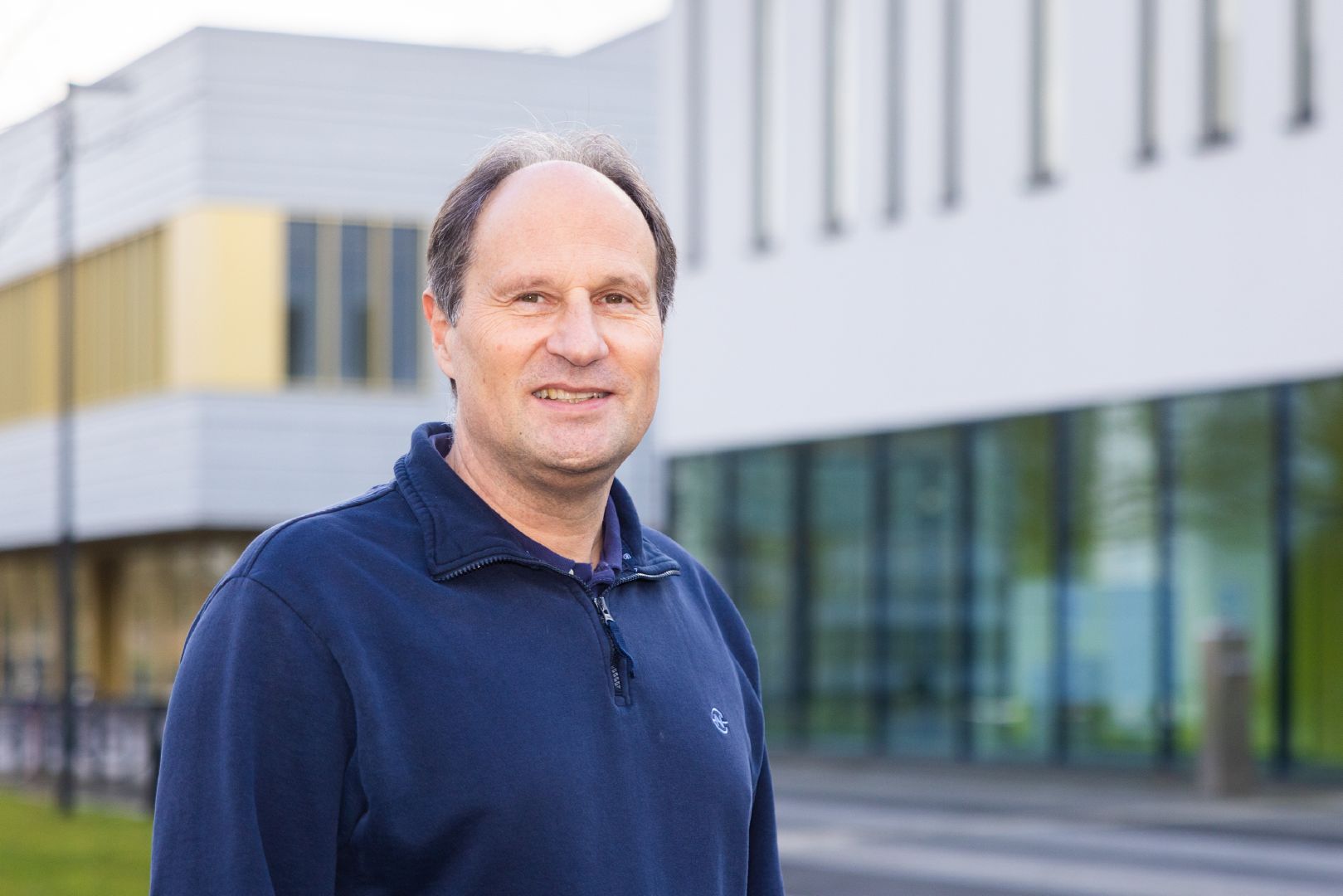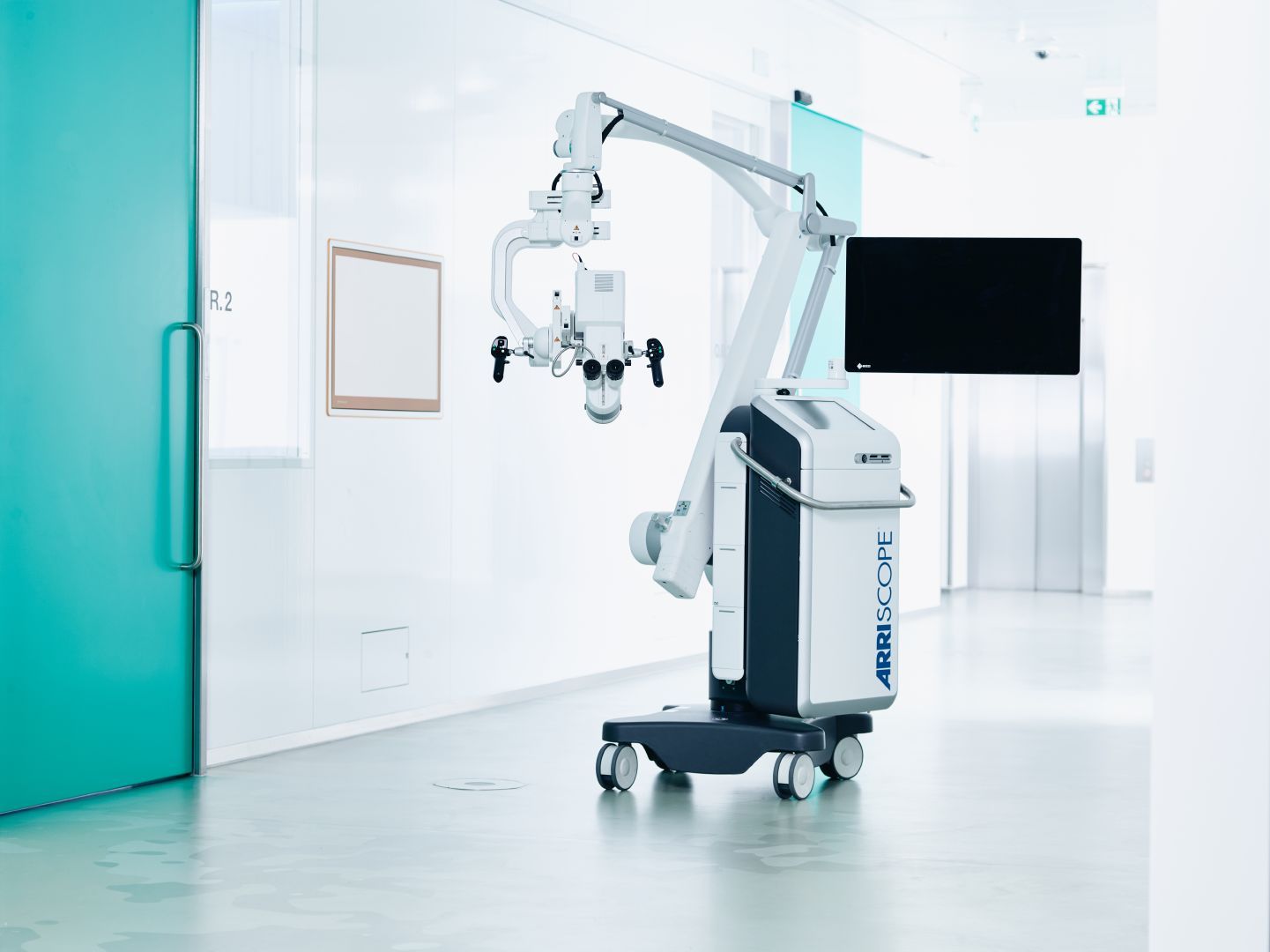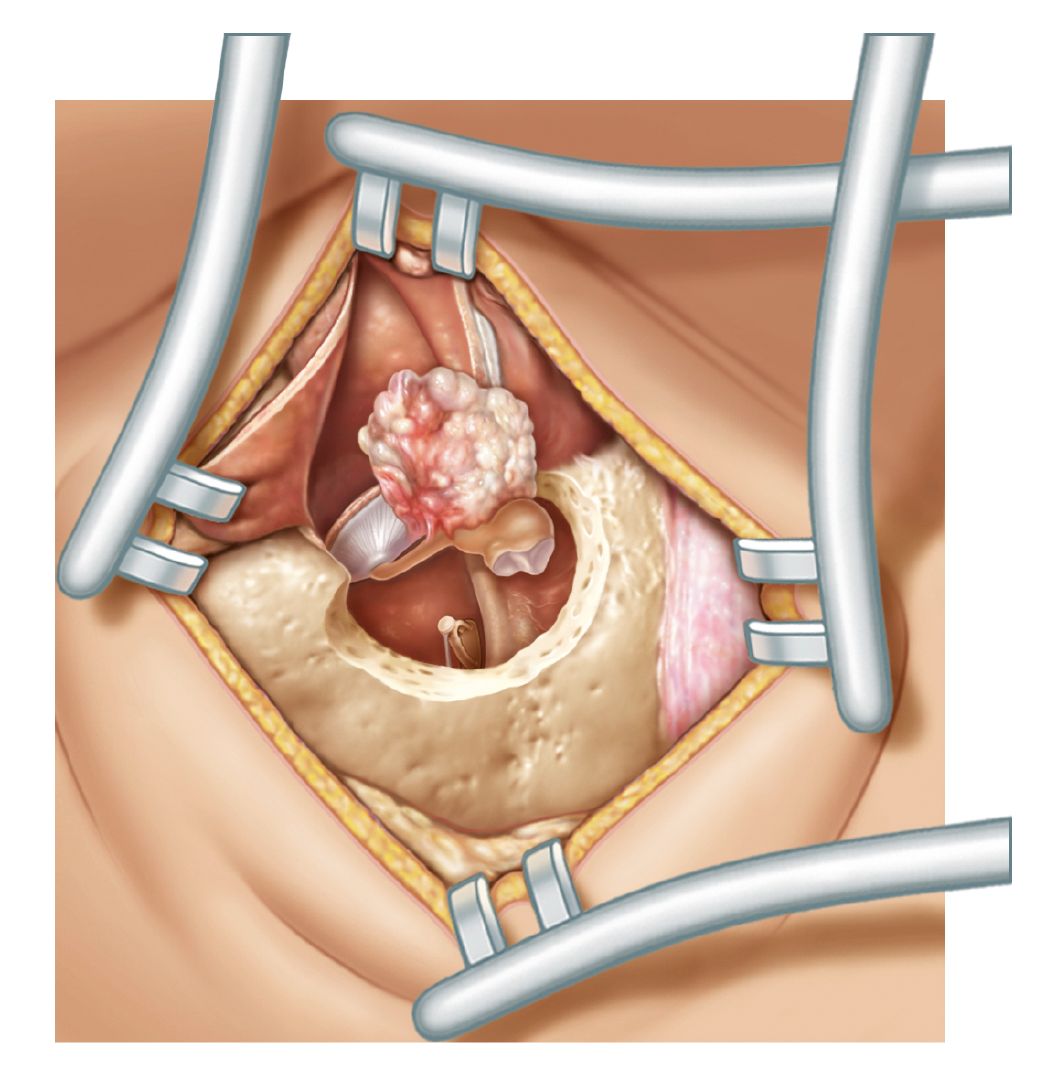Inflammation of the middle ear is often triggered a cholesteatoma, an aggressive form of chronic otitis media. In order to detect cholesteatomas and bacterial biofilms and to remove them safely, the new collaborative project ‘BetterView’ is working on a special surgical microscope. This so-called SWIR microscope system uses short-wave infrared light. The aim is to illuminate blood, bacterial biofilms, cartilage, and soft tissue; display them spatially; and make them distinguishable from each other. The seven partner institutions cooperating in the project include Bielefeld University and Klinikum Bielefeld, one of the hospitals forming the University Hospital OWL. The research is coordinated by the medical technology company Munich Surgical Imaging. A total of 4.1 million euro will be spent on the project. The Federal Ministry of Education and Research is funding the new research.
Minimally invasive surgery works with the smallest of skin incisions—so that there is hardly any injury to tissue during operations. Optical microscopes help surgeons to examine the area they will be operating on. They illuminate the surgical field and transfer a high-resolution image to a screen. Until now, however, surgical microscopy has worked almost exclusively with light from the visible spectral range. Currently available microscopes reach their limits when a surface is covered by bleeding or contaminated by bacteria. To give surgeons a clear view in such situations, the new “BetterView” project is developing the new SWIR surgical microscope. SWIR stands for Short-Wave InfraRed.
Sensors for short-wave infrared light have only recently become readily available
‘An advanced generation of image sensors now makes it possible to equip surgical microscopes with a new function: to process and display images in the short-wave infrared light spectrum in real time,’ says Professor Dr Thomas Huser from the Faculty of Physics at Bielefeld University. Huser is a specialist in biomedical photonics, which deals with the development of novel microscopy methods. Together with his team, he is constructing and using high-resolution microscopes while developing the software for image processing.
Microscopes with sensors such as the SWIR surgical microscope first have to analyse and process the recorded image signal automatically.
So that the surgical microscope can display the short-wave infrared signals, Huser and his team are developing their own software that filters out light outside the short-wave infrared spectrum and calculates a three-dimensional view of the image. ‘In addition, the software needs to produce colour contrasts. Such coloured markings make it easy to distinguish between, for example, nerves and soft tissue,’ Huser explains. The software has to display the video image in real time so that surgeons in the operating theatre can work precisely and face no delay in seeing what their intervention is doing to the surgical field.
Study with the new microscope in the University Hospital OWL
In order to test the SWIR surgical microscope in practice, the project will initially use it to treat cholesteatoma—a chronic pus-producing inflammation of the middle ear. The microscope will be tested at the University Hospital OWL’s Department of Otorhinolaryngology, Head, and Neck Surgery at the Klinikum Bielefeld. The clinic performs the most cholesteatoma operations nationwide—650 procedures annually.
‘If a cholesteatoma remains untreated, it can lead to serious damage,’ says Professor Holger Sudhoff, MD, PhD, FRCS, FRCPath, Director of the University Department of Otorhinolaryngology, Head, and Neck Surgery at Klinikum Bielefeld and member of the Medical Faculty OWL. ‘In such cases, the chronic inflammation will destroy the three auditory ossicles so that the affected person will become hard of hearing in that ear,’ Sudhoff explains. In later stages, the inflammation can also lead to facial palsy, meningitis, and intracranial abscesses. Cholesteatoma, generally accompanied by severe bone destruction, can be caused by a middle ear infection or by the tympanic membrane retractions extending into the middle ear.
Common surgical microscopes at their limits
Surgical microscopes, which work only with the light range visible to humans, are normally used for diagnosis, surgery, and follow-up care. ‘They help us determine whether a bacterial biofilm has formed,’ says Sudhoff. If a cholesteatoma becomes inflamed by bacteria, it will grow faster and damage the adjacent bones more severely. However, the extent to which bacterial colonization has spread is often not visible with standard microscopes because, for example, bleeding that obscures the biofilm.
In addition to microscopy, specialists also use computer tomography (CT) and magnetic resonance imaging (MRI) to diagnose cholesteatoma. However, this cannot distinguish possible fluid in the middle ear from a cholesteatoma. Magnetic resonance imaging is also used to prepare for surgery. Although it provides a higher resolution than CT, the disadvantage is that it cannot show the details of the ossicles precisely enough.
Using the microscope to completely eliminate bacterial infestation
The project team expect a number of advantages from the new SWIR microscope. Its ability to see through blood and distinguish bacterially infested tissue, bone, nerves, and soft tissue is particularly important. ‘Already during the operation, this will enable surgeons to see where remaining bacterial colonization is still present in the middle ear,’ says project coordinator Dr Hans Kiening from the medical technology company Munich Surgical Imaging (MSI). ‘This allows them to completely remove infected areas that could otherwise lead to the development of a new cholesteatoma.’ MSI is providing a surgical microscope that is already used in surgery and provides high-resolution images. The new project is building on this development.
Compared to conventional microscopes, the future SWIR microscope will also be able to see through soft tissue. This will make it possible to examine optically hidden areas as well. Then, surgeons will be able to see whether bone material in the inner ear has been colonized or damaged by bacteria. In addition, the microscope should increase patient safety. If surgeons can see and distinguish the inner ear precisely, there is less risk of damaging sensitive structures such as the facial nerve or the labyrinths of the inner ear.
The Federal Ministry of Education and Research is providing 2.73 million euro of funding to the BetterView joint project as part of the funding initiative ‘Photonic methods for detecting and combating microbial contamination’ (Funding number: 13N15827). Of this amount, 374,000 euro is going to Bielefeld University and 478,000 euro to Klinikum Bielefeld. The project is running from January 2022 to December 2024 and is being coordinated by the medical technology company Munich Surgical Imaging (MSI). Alongside Bielefeld University and Klinikum Bielefeld, other members of the cooperation project are the Helmholtz Pioneer Campus at Helmholtz Zentrum München, Leibniz University Hannover, the camera system manufacturer PCO AG, and the laser manufacturer Omicron-Laserage Laserprodukte GmbH.
Chronic diseases play a significant role in research at the Medical School OWL. These are diseases that persist over a long time and are often difficult to treat or not completely curable. Chronic diseases are among the most common health problems in Germany and other industrialized countries. The Medical School OWL is dealing with them as part of its research profile ‘Medicine for People with Disabilities and Chronic Diseases’.








